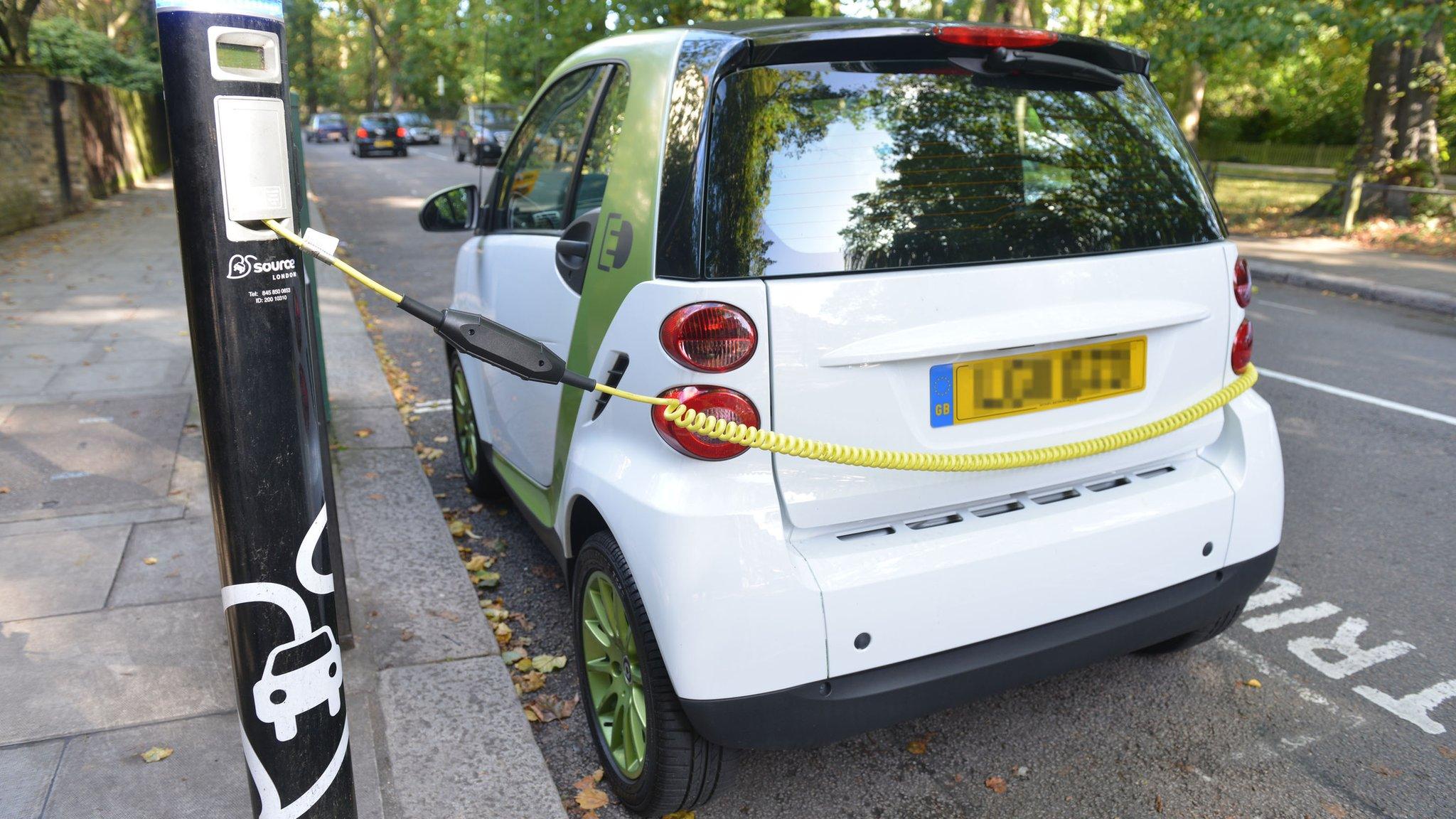ULEZ: Fewer electric car street charging points outside zone
- Published

Electric car drivers have fewer on-street places to charge up outside the current ULEZ area
Electric car drivers have fewer on-street spots to charge their vehicles outside London's current Ultra Low Emission Zone (ULEZ) than inside it.
The number of public street chargers varies by over 2,500 between the best and worst London boroughs, data shows.
The capital has a third of the UK's public charging devices, but they are concentrated in the current ULEZ area.
Transport for London (TfL) says it is "working tirelessly" to increase the number of charging ports.
In August, Londoners will be subjected to tighter vehicle regulations when the zone is expanded.
The aim is to cut pollution levels across London by charging drivers of vehicles that do not meet minimum emissions standards £12.50 a day.
Exemptions include petrol and diesel vehicles meeting Euro 4 and Euro 6 standards respectively, and electric vehicles.
But drivers outside of the current boundary have fewer on-street places to charge electric cars, according to data gathered by the BBC.
There are also more households in Outer London that have access to or own at least one car or van, according to census data.
Alex Williams, TfL's chief customer and strategy officer, said that expanding ULEZ was "vital for public health" in London.

Merton, in south London, will soon become the best-equipped area for on-street charging in Outer London.
Of the 90,000 households in the borough, an estimated 37,000 cannot access off-street electric vehicle (EV) charge points at home, the council reported.
It said it would finish rolling out 530 charge points within the next four to six weeks, having reached the halfway mark on 30 March.
The project will triple the number of public charge points in Merton from 259 at the start of January to 789.
Once completed, 78,000 Merton homes will have at least one charge point within a two-minute walk of their front door, the council said.
Stephen Alambritis, Merton Council's cabinet member for transport, said he wanted Merton to be "one of the best places in London" to drive an electric vehicle.
Across the capital's 33 boroughs, nine of the 10 outside the current ULEZ area rank in the bottom half for availability of charge points.
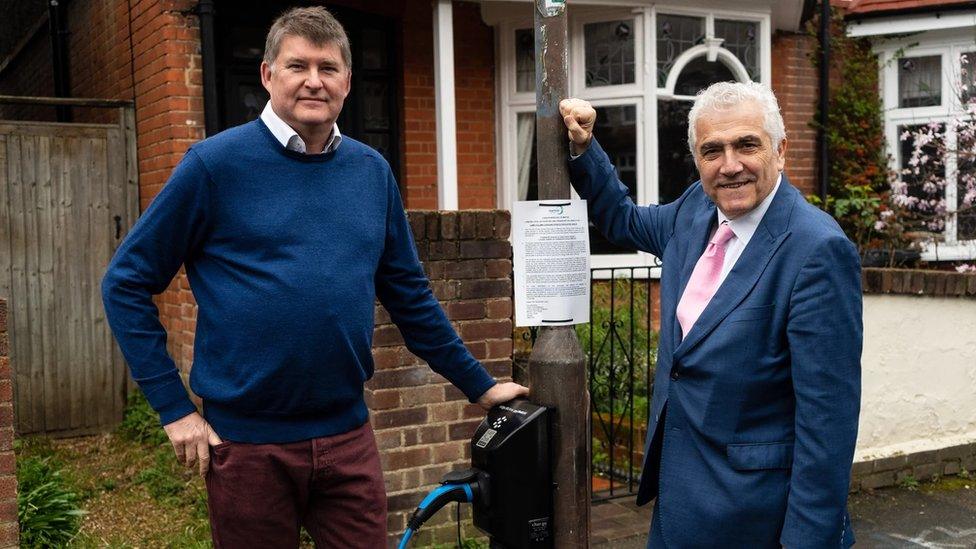
Merton will soon become the most well-equipped area for on-street charging in Outer London
Bexley in south-east London has 12 on-street chargers - the fewest in the city, and three off-street charge points. Each point can charge two vehicles at once.
This was due to increase to 75 on-street chargers, and 46 in car parks by the end of March.
Havering, Harrow and Barking & Dagenham also fall in the bottom five for the number of charge points, with 49, 61 and 68 respectively.
In contrast, Hammersmith and Fulham, which is within the existing ULEZ, has 2,772 on-street chargers - more than 100 times the number in Bexley.
Westminster is the second-best equipped borough, with 2,024 on-street chargers, and Wandsworth comes third, with 902 charge points on its streets.
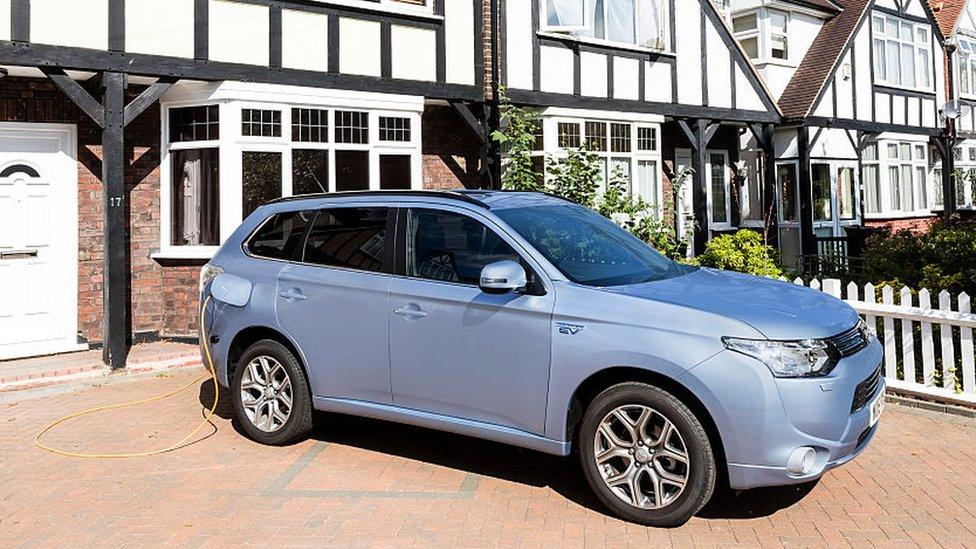
Ben Nelmes, CEO of New Automotive, said most households outside ULEZ could charge on their driveway
Ben Nelmes, CEO of New Automotive, a non-profit organisation supporting the UK's transition to electric vehicles, said the distribution of charge points across London reflected the different patterns in demand.
"It depends on whether they've got a driveway where they can park and charge," he said.
"The majority of households outside ULEZ have access to off-street parking. That is what's sitting behind the figures."
Mr Nelmes said there were a few exceptions.
"In Waltham Forest, 37% of households have a driveway," he said. The borough has 502 off-street charge points.
However, Londoners living within the ULEZ are less likely to drive a car.
The latest census data found 42% of households in Inner London have access to or own at least one car or van, compared with 69% in Outer London.
Charlotte Lewis, from Richmond, said she often sat in her car in a Lidl car park, waiting for her Tesla to charge.
The 33-year-old bought the electric car with her husband last year to replace their old diesel BMW.
They made the decision ahead of the ULEZ change, recognising it would save them a "significant" sum of money over time.
Part of the borough currently falls within the restricted zone, with all of it included in the expansion plan.
Changing to electric also meant they could park outside their flat free - no longer having to pay about £100 for an annual permit.
But the couple have struggled to find nearby charging points that are available and working, Ms Lewis said.
The borough has 439 on-street charge points, and seven in car parks.
Charging at the supermarket
"We've had the car for a while, and our closest on-road point has never been free," she told BBC London.
Instead, they drive over the bridge to east Twickenham, and plug the car into a superfast charger in the Lidl car park.
Ms Lewis's husband often does this in the evening, taking his laptop with him in the car to work while he is parked.
"If you're not organised, [charging] can be super-stressful," she said."I don't think the structure is in place."
She added lamppost chargers in Richmond were often "not available".
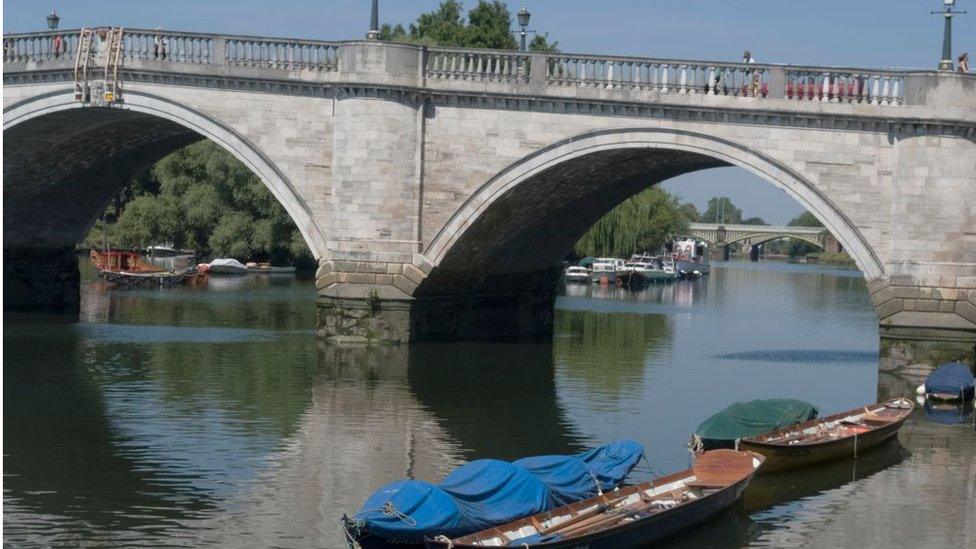
Charlotte Lewis, from Richmond, drives over the river to charge her Tesla at a supermarket in Twickenham
In a ChooseMyCar.com survey of 1,344 Londoners, 61% said they could not afford or did not have the ability to install a charge point at home.
Data provided to the Department for Transport (DfT) by electric vehicle charger mapping service Zap-Map states there were 11,521 public charging devices in London by January.
This equates to 131 EV chargers per 100,000 people - the highest per capita rate in the UK.
Mayor of London Sadiq Khan has previously predicted 40,000 to 60,000 chargers will be needed by 2030 , externalin order to meet the rising demand across the capital.
There could be between one and 1.4 million EVs in London by the end of the decade, TfL has estimated, external. The government's proposed ban on the sale of new petrol and diesel cars by 2030 is expected to accelerate the uptake.
92,000 Number of electric cars registered as of January
3,921Number of electric vans registered as of January
32%Proportion of new car sales in January that were for a fully electric vehicle
A spokesperson for TfL said: "Having no access to off-street parking is commonly a key criterion for selecting sites. The proportion of households without access to off-street parking tends to be lower in Outer London.
"TfL and London Councils will continue to support boroughs with procurement advice and help to apply for government funding, including the new Local EV Infrastructure Fund, to expand the on-street residential charge point network and meet demand from residents."
TfL is looking for a contractor for 100 rapid-charge bays on its road network, including "many" sites in Outer London, the spokesperson added.
In February, the DfT announced thousands of charge points would be installed in 16 council areas across the UK, including three London boroughs.
It is the latest phase of the Local Electric Vehicle Infrastructure (LEVI) scheme - the first phase was piloted in Barnet and two other boroughs - which is funded with £56m of public and industry investment.
Councils in London to have secured funding are Hackney, Hounslow and Waltham Forest. They currently have 330, 388 and 502 on-street chargers respectively.
Londoners can suggest locations for on-street EV charging, external in their borough.

Follow BBC London on Facebook, external, Twitter , externaland Instagram, external. Send your story ideas to hellobbclondon@bbc.co.uk, external
Related topics
- Published26 January 2023
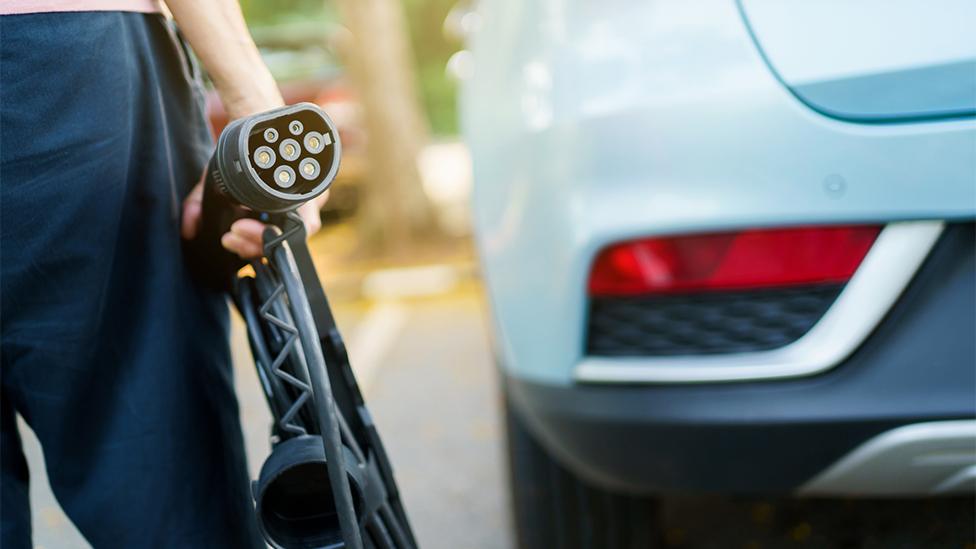
- Published21 February 2023
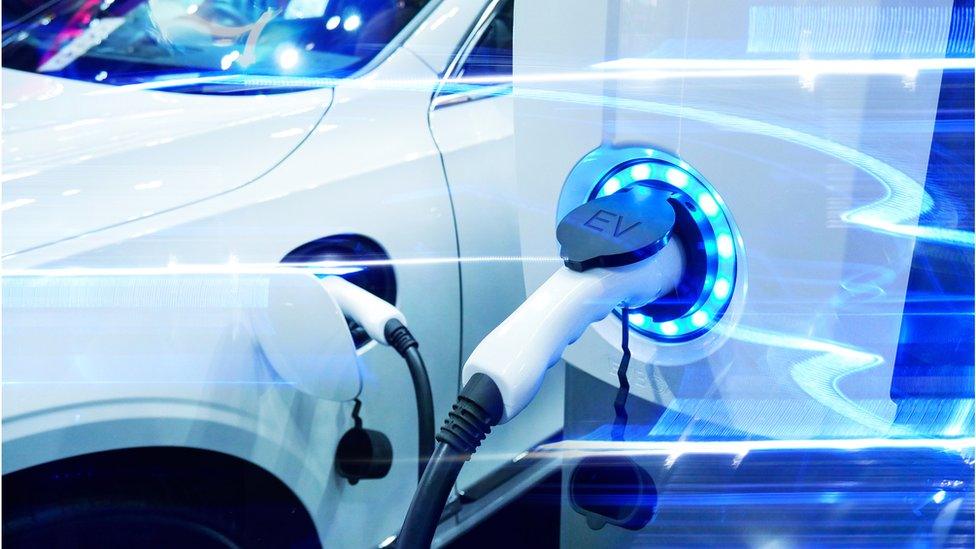
- Published24 November 2022
